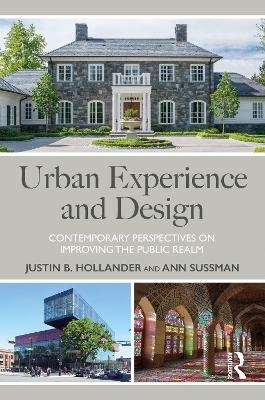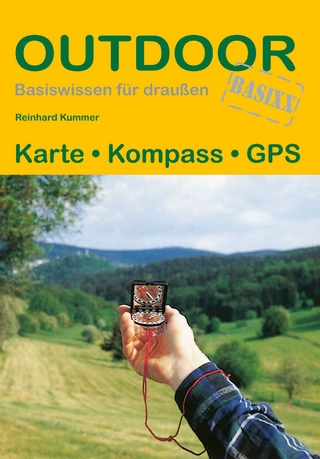
Urban Experience and Design
Routledge (Verlag)
978-0-367-43555-4 (ISBN)
This collection contains 15 chapters, including contributions from researchers in the US, the UK, the Netherlands, France and Iran. Addressing topics such as the impact of eye-tracking analysis and seeing beauty and empathy within buildings, Urban Experience and Design encourages us to reframe our understanding of design, including the narrative of how modern architecture and planning came to be in the first place.
This volume invites students, academics and scholars to see how cognitive science and biometric findings give us remarkable 21st-century metrics for evaluating and improving designs, even before they are built.
Justin B. Hollander is a professor of Urban and Environmental Policy and Planning and director of the C.A.G.S in Urban Justice and Sustainability at Tufts University. His research and teaching is in the areas of physical planning, big data, shrinking cities and the intersection between cognitive science and the design of cities. He is the author of seven other books on urban planning and design, including Cognitive Architecture: Designing for How We Respond to the Built Environment (with Ann Sussman) and Urban Social Listening: Potential and Pitfalls for Using Microblogging Data in Studying Cities, and was recently inducted as a fellow of the American Institute of Certified Planners. He hosts the Apple podcast 'Cognitive Urbanism.' Ann Sussman is a registered architect, researcher and college instructor. Her book, Cognitive Architecture: Designing for How We Respond to the Built Environment (Routledge, 2015), coauthored with Justin B. Hollander, won the Place Research Award from the Environmental Design Research Association (EDRA) in 2016. She currently teaches a new course on perception and the human experience of place, 'Architecture and Cognition,' at the Boston Architectural College (BAC). In 2020, she founded and became president of the nonprofit The Human Architecture + Planning Institute, Inc. (theHapi.org).
Introduction: The 21st-Century Paradigm Shift in Architecture and Planning Section 1: Historical and Theoretical Foundations of Architecture and Planning 1 Sense of Place: Looking Backward to Go Forward? 2 Classic Planning: The Power of Beauty for Human Architecture and Planning 3 Bonding with Beauty: The Connection Between Facial Patterns, Design and Our Well-Being 4 Neuroscience Experiments to Verify the Geometry of Healing Environments: Proposing a Biophilic Healing Index of Design and Architecture Section 2: Twenty-First-Century Tools: Biometrics and Measuring the Human Experience of Place 5 Identifying Biophilic Design Elements in Streetscapes: A Study of Visual Attention and Sense of Place 6 Exploring Eye-Tracking Technology: Assessing How the Design of Densified Built Environments Can Promote Inhabitants' Well-Being 7 Attention and Focus in the Perception of Persian Architecture Section 3 Explorations of the New Paradigm for Urban Experience and Design 8 Cognitive Mapping, Mobility Technologies and the Decoupling of Imageability and Accessibility 9 Emerging Transport Futures for Streets and How Eye Tracking Can Help Improve Safety and Design 10 Ecoempathetic Design: Moving Beyond Biophilia With Brain Science 11 Exploring Urban Form Through OpenStreetMap Data: A Visual Introduction 12 A Device-Free Mapping Approach for Quantifying User Activities in Indoor Environments 13 Being Seen, Feeling Heard: Designing Intimate-Scaled Spaces on Urban College Campuses Conclusion: Understanding Ourselves Better Reframes Architecture and Planning
| Erscheinungsdatum | 19.10.2020 |
|---|---|
| Zusatzinfo | 4 Tables, black and white; 15 Line drawings, black and white; 90 Halftones, black and white; 105 Illustrations, black and white |
| Verlagsort | London |
| Sprache | englisch |
| Maße | 152 x 229 mm |
| Gewicht | 412 g |
| Themenwelt | Geisteswissenschaften ► Psychologie |
| Naturwissenschaften ► Geowissenschaften ► Geografie / Kartografie | |
| Technik ► Architektur | |
| ISBN-10 | 0-367-43555-1 / 0367435551 |
| ISBN-13 | 978-0-367-43555-4 / 9780367435554 |
| Zustand | Neuware |
| Informationen gemäß Produktsicherheitsverordnung (GPSR) | |
| Haben Sie eine Frage zum Produkt? |
aus dem Bereich


